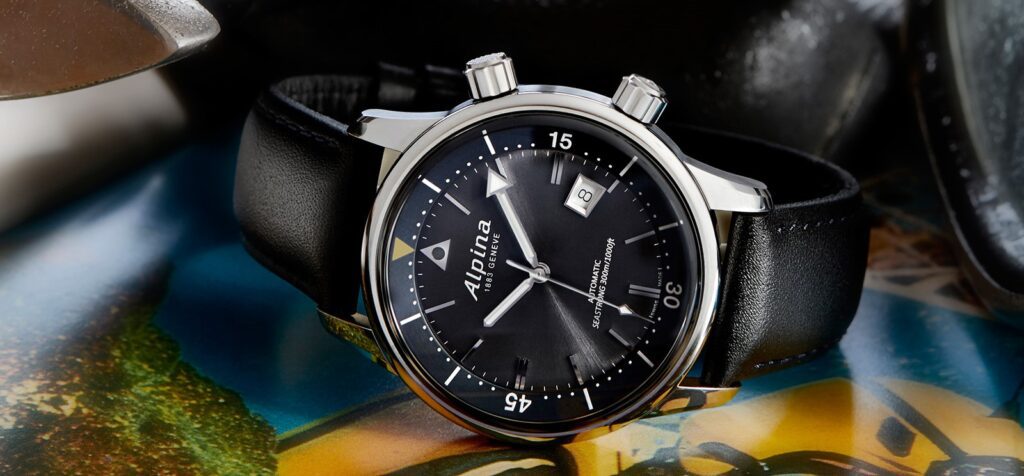Ervin Piquerez S.A. Super Compressor

We’ve recently been covering dive watches quite a bit here at TimesTicking. We’ve gone over Jacques Costeau’s favorite watch, picked apart helium escape valves, and explored the history of canteen watches (among other subjects). There’s a particular piece of tech that we still have not covered—an industry-shaping innovation from Ervin Piquerez S.A. (EPSA) known as the Super Compressor (SC). Now, the SC isn’t a watch itself—though it would make for an impressive name. It’s actually a specialized watch case that can adapt to increasing pressure when diving deep. What one could consider a dressier dive case (at just 36-42mm in diameter), ESPA SC cases weren’t built with bulky rotating bezels like their contemporaries. Instead they had an internal timing ring which made them more sleek and unassuming to the untrained eye. Ahead we’re going to have a closer look at their history and who employed their water-resistant power.
A Design for Divers
EPSA released their patented technology in 1956 and manufactured it up until the early 1970s. It was in this time that over 100 watchmakers including big names like Jaeger-LeCoultre, Hamilton, Bulova, Wittnauer, Benrus, IWC, Blancpain, Bucherer, Tissot, and Universal Geneve employed SC’s in their timepieces. Needless to say, it was popular—and for good reason. SC’s were a way for divers to keep time without worrying about air-release valves or the bulk of thicker cases and crystals. The essential nature of the ESPA Super Compressor was allowing for the case back of a watch to seal tighter as the watch dove deeper and deeper. Out of the water, the O-ring in the back of the watch received less pressure. Longevity in the seal was a result of this case design—meaning less maintenance after repeated wear and tear.

Since their heyday came and went, ESPA SC case designs have remained iconic to collectors and have been mimicked by modern dive watch companies. A few design features that carried over are the two crowns (at 2 and 4), the “quadrilled” or hashmarked ends of those crowns, and ESPA’s old-timey diver’s helmet logo. Watchmakers claiming deep water resistance often still employ these design features for aesthetic reasons. One of those features, the two crowns, still has utility with diving. The second crown was originally designed to set the internal timing ring on SC cases. This aspect of dive watch design can be seen from plethora watch companies to this day—though they do not pressurize their watch cases similarly.
Finding Originals
Final liquidation of all of ESPA’s assets took place in the early 1990s, but their dive cases were discontinued in the 1970s as they moved toward other sports-watch case designs. This makes original SC watches highly collectible, especially from watch brands that are still prominent today. More obscurely named watches can be found at auction under the $1,000 mark. However—if you want to pick up, say, a Blancpain SC watch you’ll be facing some top-dollar bidding. It’s the mark of a true aficionado if you can snatch up one of these deep-sea capable watches and make it a part of a collection. With many imitations nowadays, ESPA has left more than a dive helmet mark on the watch industry. Their rise and then dive into obscurity is a cherishable snapshot of a time when watchmakers were engineering impressive mechanical divers. One might even say, “they don’t make ‘em like they used to”.
Times Ticking has been in operation for more than 30 years, since 1982. We have performed watch repair for customers both locally and internationally. If it Ticks! We KNOW it! Our team of watch repair technicians have a combined experience in watchmaking of over 120 years.

